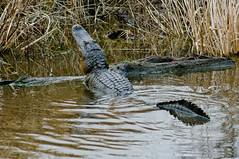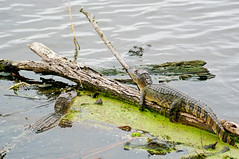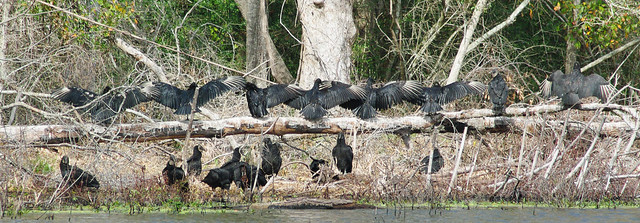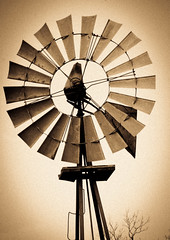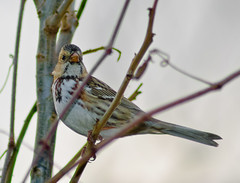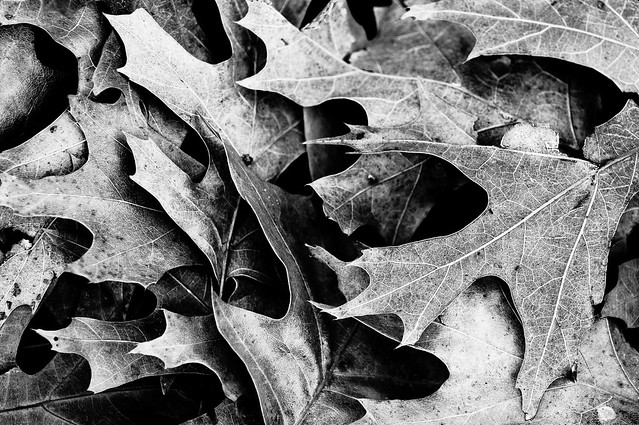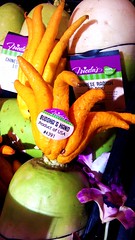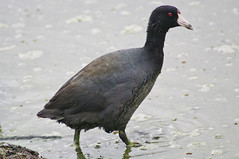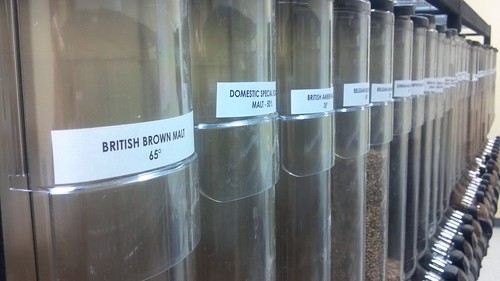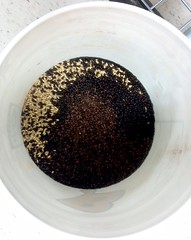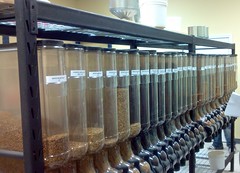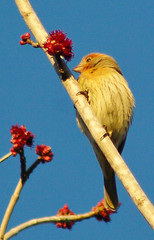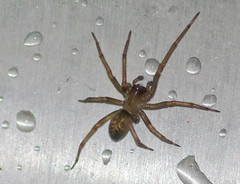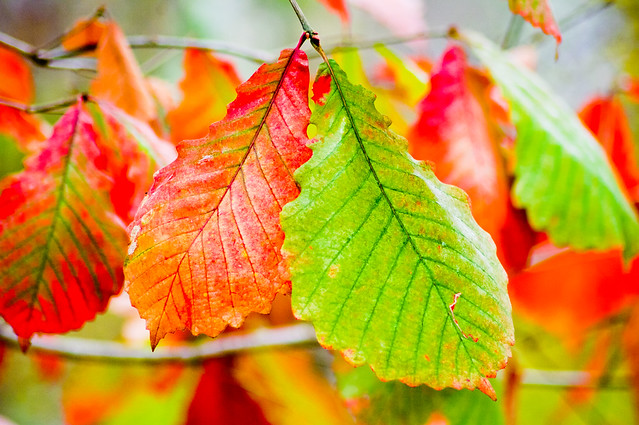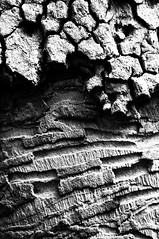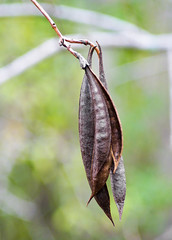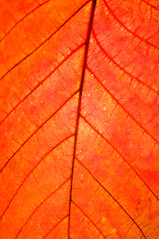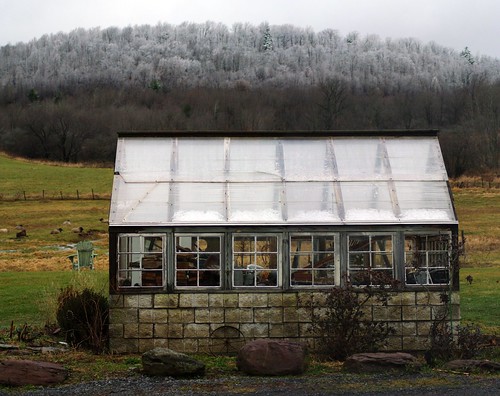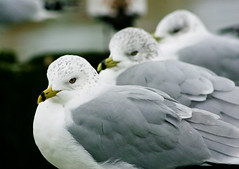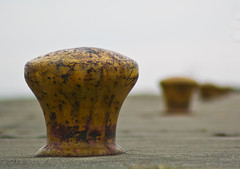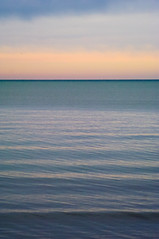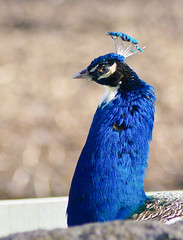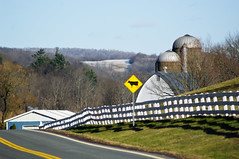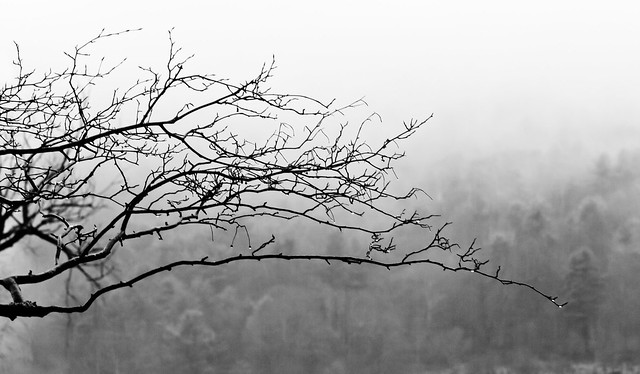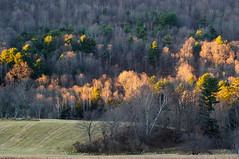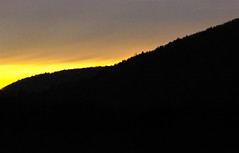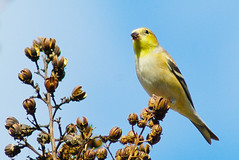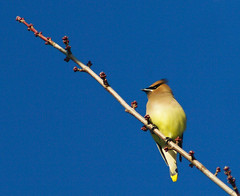Land of the Painted Cavesiii, by Jane Auel – The main character is named Ayla, which I can only assume is Cro-Magnon for “Mary Sue”. The ultimate in wish fulfillment characters, Auel has her surviving fights with lions, earthquakes, inventing pretty much every stone-age technology, domesticating the first horse/wolf/cave lion, becoming the most beloved wherever she goes, being the hottest/blondest/blue-eyed-ist/hardcore hunter around, and of course, having the tallest boyfriend with the biggest....spear. All of which is described at unendurable length in gushing yet horrendously awkward prose. I read the series starter, Clan of the Cave Bears, a long time ago and blew through the series. I never really enjoyed the writing as much. The only thing that made me pick up this last installment was that I wanted to see how the story ended. I love the concept of survival at the dawn of man. after the first hundred pages or so, I could really identify with the characters ...but only because I was suffering in empathy with them, having had to endure the seemingly endless and pointless shuttling of characters back and forthiv. It's an entire book made of meaningless neolithic small talk.
Wildwood, by Colin Meloy – I was hesitant to add this to the Awfully Bad section, because I really like Mr. Meloy's work with The Decemberists, and, in honesty, I haven't read the whole thing. However, having read a couple chapters issued as a promo, I think I've seen enough to comment. And that comment is: no. It seems to have become vogue for singer-songwriters to go the children's entertainment route. Natalie Merchant did it pretty damn well with her “Leave Your Sleep” album, etc. But Wildwood, while potentially interesting to Decemberists fans, seems wholly unrelated to its target 9-12 year old audience. It's odd in that “we're trying to be unique to point out how much we don't fit in” way. A reviewer for the Times said, quite rightly, it got a little too Portlandy. Like it was written ironically, for children to read ironically. The problem is, no one told the children. So what you're left with is a slightly pretentious, somewhat poorly writtenv children's book that really doesn't make much sense to childrenvi, and isn't engaging enough for anyone but fans who are going to like whatever Meloy puts out. It should say something that I normally fall in the latter demographic, but this still didn't do it for me. Next time, Colin, follow Natalie's lead and do a children's album.
The Fairly Disappointing
Abraham Lincoln, Vampire Hunter, by Seth Grahame-Smith. Given my respect for Mr. Lincoln, and my love of vampire-slaying in general, I really wanted this to be a good book. I should have taken my cue from Mr. Graham-Smith's earlier works, including Pride and Prejudice and Zombies. Another great idea, that just wasn't executed all that well. After the first couple interjections of zombie outrage into the existing prose, it just got old. As sad as it is to say, Mr. G-S's writing just wasn't up to co-mingling with Austen'svii. Abraham Lincoln, Vampire Hunter at least held the promise of being a new work, without having the burden of trying to clumsily sandwhich new prose into existing story. It was a cool ideaviii, but again, the writing just didn't do it for me. It does make a good effort at mirroring the documentary style of Burns and his contemporaries, but it just doesn't work on the page. I know it's a lot to expect that gimmick-oriented books like this will still be engaging beyond the “oh what a clever idea” initial reaction, but there it is anyway. I mean, if Joss Whedon and co. can manage to generate years of well-written vampire-slaying dialogue and story for the WBix, then I don't feel bad expecting it in novel form. Good for a quick read, great premise, but a bit lacking in execution.
Tinkers, by Paul Harding – I really wanted to like this multi-generational book. At its best, it has some brilliant moments of well-paced prose. The description of epileptic seizures is riveting. But the book never coalesced into anything. It was just moments, and not ones especially well related, swirling around in an exceedingly thin broth. The short length of the book may have had something to do with it, as I think it could have been very compelling if it had more room to stretch its legs.
The Middling
The Kite Runner, by Khaled Hosseini – This book probably would have gotten a better ranking from me if I hadn't been seemingly the last literate person in North America to read it. Everywhere I went with it, I was greeted with gasps of “you haven't read that yet??”. I fully expected Oprah to send hired goons to teach me the error of my ways at any moment. I will say I enjoyed the book. It was well written, very well written in some parts. But for me it lacked some degree of subtlety that would have made it an instant classic in my mind, and relied a little too much on cumulative tragedy as a vehicle. This book may actually be better than some ranked above it, but it didn't live up to the hype for mex. Having heard people talk about it for so long, in such gushing terms, I was expecting something more. I highly recommend it, but I don't put it in the same tier as more favored authorsxi.
The Yosemite, by John Muir – As much as I am a life-long fan of Muir, and think of him as an inspirational figure, I have to admit....I don't like his writing all that well. I love the subject, and I love Muir's enthusiasm, which leaps from the page. I also recognize that part of what doesn't translate well for me is based on the different eras between the writing and the reading. However, Muir's gushing is sometimes as voluminous as the falls he describes, and can be somewhat heavy-handed. In all the gushing, however, he doesn't really give me the sort of sensory images that would really translate Yosemite to me (and I've been there and seen it firsthand...). I have no doubt that actually having Muir tell this story to you personally would be incredibly engaging, especially if done on the trail. Reading it doesn't work as well.
The Geography of Nowhere, by James Howard Kuntsler – this is an important book for urban planning, and the way we view development and our built environment. I do not argue that in the least. I originally read this book in grad school, and it was one of those mental breakthrough moments. I re-read it this year to see if anything had changed now that I've been working in the field for several years. Even recognizing that this isn't really supposed to be a balanced and even-handed look, Kuntsler's polemic just doesn’t hold the punch for me that it once did. Chalk it up to being more jaded about the unfortunate tendency toward unbalanced, if well-meaning, idealism that is a sometimes-food of urban planningxii. I still think it's a powerful look at the history and state of our developmental forces. I just think it fails, or deliberately avoids, dealing with the devil in the details.
The Road, by Jack London – Not to be confused with Kerouac's much more frentic, later work, London's novel is about, well, hobos. 100% hobo goodness. At first the over-the-top style threw me, making it sound a bit like a collection of tall tales. However, reading more about London's time actually spent hobo-ing, and his involvement with some of the seminal labor/hobo-related social movements of the day, cast it in a new light. It had a Teddy Roosevelt feel to it, rather than what I think of as London's style in Call of the Wild, etc. It was definitely a quick, interesting readxiii. Not as meaningful a work as Call, or as aptly written, but still a great example of that turn of the century adventurous fare.
Stories of the Great West, by Teddy Roosevelt – Roosevelt has always been a fascinating character to me. He embodies what I think of as the American spirit, for better or for worse. Adventurous, self-reliant, lover of wilderness and the land; a boisterous soul. His writing style is equally larger than life. This recounting of the “winning of the west” is at times propaganda, and at time hyperbole taken to the nth degree, but still manages to convey the sweep of vast open lands and the dizzying expansion of the continent. Not to be taken as a scholarly look at the history of the times, but an enjoying readxiv.
The Pretty Darn Good
The Hunger Games, by Suzanne Collins – I was hesitant to read this book, as it had been so hyped to me, often by devotees of the sparkly-vampire-series-that-shall-not-be-named. However, my love for post-apocalyptic fiction overwhelmed my literary snobbishness, and I blew through the first book at a fairly rapid pace. The story is not new, in the sense that it's a pretty tried and true archetype...from the mythical young people sacrificed to the Minotaur of Greek fame, to The Lottery, and thence on to more modern precursors like The Tripods/The White Mountains and the cult classic Battle Royale, you could make the argument that it's a little derivative. Not specifically derivative like Harry Potter from The Dark is Risingxv, but close enough to many preceding works to stop me from calling it a unique vision. That being said, I thought it was a great start to a seriesxvi. The style is well geared toward its targeted audience, but is still interesting enough to reach adult readers. And not in the sort of creepy way as the aforementioned sparkly vampires. In an era dominated with bad manga and sparkly vampires, this feels like just the right cross between Judy Blume and Red Dawn.
I read through a couple graphic novel series this year, the best of which were:
Sandman, by Neil Gaiman – Another re-read this year, so it's a bit of cheating, but given the length and depth of this “comic book”, I'm counting it. Gaiman's imagination and iconic characters shine through, despite sometimes less-than-complementary art.
Scalped ,by Jason Aaron – Raw, violent, gritty...but great characters. I think of it as The Wire meets Bury my Heart at Wounded Knee.
The Walking Dead, by Robert Kirkman – Now well known from the less-compelling TV series based on this story, the graphic novels seemed at first of no interest to me. I love zombies, yes, but the art is so-so, the dialogue is meh, and there is not yet a definitive end in sight, just the endless comics slog, unlike epics like Sandman. However, it really ended up being a story about people, with zombies added in, and I always give good characters and interaction a shot.
Birder's Guide to the Texas Coast, by Coosky and Weeks – I got this unassuming volume as a Christmas gift from my father-in-law. It is a definitive site-by-site guide to birds on the Upper Texas Coast. No glossy, splashy images, no filler text, just a fantastic reference poured out of the longtime experience of two equally fantastic birders, one of whom (Weeks), I've had the fortune to meet personally. It's a great vehicle for someone like me who isn't part of the local birding community to benefit from the collected knowledge thereof, without being a pandering and overly vague beginner's guide. It sits next to Sibley's Guide to Birds in a place of honor on the naturalist books shelf in our study. I fully expect it to become equally field-worn in time.
Last Town on Earth, by Thomas Mullen – Some of my favorite authors didn't hit their stride until second or third works. Nailing it right out of the starting gate is not easy to do. If one was down to a literal “last town” on Earth, there would be no need to worry about town-deficit, as it would be quite easy to build an additional town solely out of the remaindered copies of famous author first novels. That being said, this is a pretty damn good first effort. Part of my interest in the bookxvii was its setting in the early 1900's, which I think is still a fairly untapped resource for setting. The book has a strong atmosphere of class antagonism, and its isolated setting and crisis work so well hand in hand that it creates an almost visceral mood. Mullen characters and pacing could use a little work, it drags at some points, and speeds at others, but it still ends up being a compelling book.
Best Reads of the Year
The Amazing Adventures of Kavalier and Klay, by Michael Chabon – I'm still not sure why I like this book so much. It won't be an important social milestone for generations to come...some polemic masterwork to launch a social movement. It's not in my same mental tier as the masterful subtletyyy of Kazuo Ishiguro, the brutal honesty of Hemingway, or the tremendously epic sense of place of Cormac McCarthyxviii. But the characters are simply fantastic. Even in a book that is just essentially about two Jewish kids making 3rd rate comic books, the characters are so fully fleshed-out, that you get the feel of a literary diorama...a picture-perfect 3d rendering of NYC of the era. While the scale is in the minutia, the sweep of the characters lives still feels epic. I'm sure it owes more than a tip of the cap to Neil Simon's plays, but Chabon creates classically American characters. This is a dialogue driven book, and the patter is nothing if not snappy.
The Collected Works of Billy the Kid, by Michael Ondaatje – Completely switching gears, this themed collection of poetry/prose snippets/etc. Caught me completely by surprise. I found this in a used book store, and bought it solely for the authorxix. I had expected more of a straight prose take on Billy the Kid...like an exceedingly well-written historical novel. What it turned out to be was an incredibly dense collection of snippets of thoughts and images of and by the Billy the Kid character, in nonlinear order, all forming a complex web and a sparse but haunting sense of a life. Not an easy read, and arguably a little pretentious, but a great find.
Beowulf, translation by Seamus Heaney – This critically acclaimed translation is not new, and of course the story itself is almost ageless. Heaney's translation is at once more true to the original than many that preceded it, while at the same time an artful rendering, adding nuance and grace to the saga. This had been sitting on my shelf a while, when I decided it would be fitting to bring a northlander saga along with me on my trip to Iceland this year. I'm a longtime fan of Heaney, who to me, is the inheritor of the Irish poetic heritage of Yeats, et al. While still finding an incredibly unique way of blending that lyrical heritage into his powerful modern voice. I ended up reading only part of the saga during the trip, for lack of time. Also, the book got turned into a makeshift arctic flower and other natural debris press as part of my field curiosity on long hikes. Even still, I think that was pretty fitting as well. Regardless, I finished the translation later, and think for once, the reality lives up to the hype.


